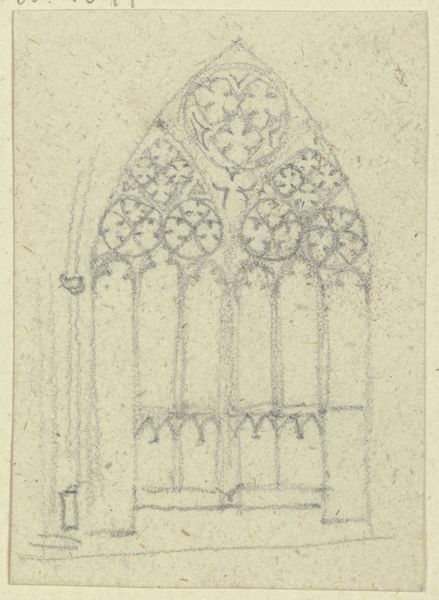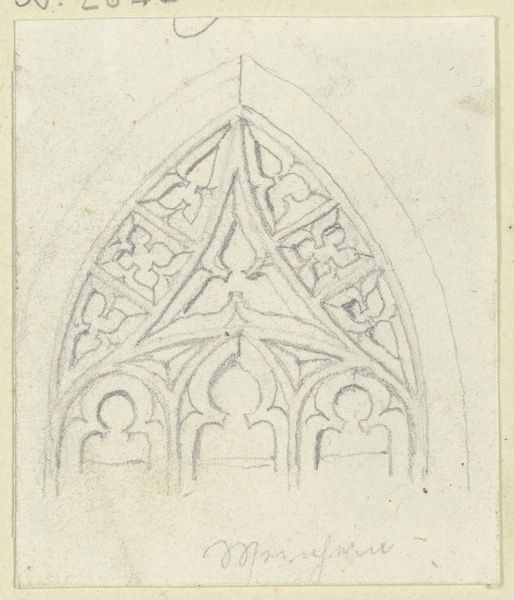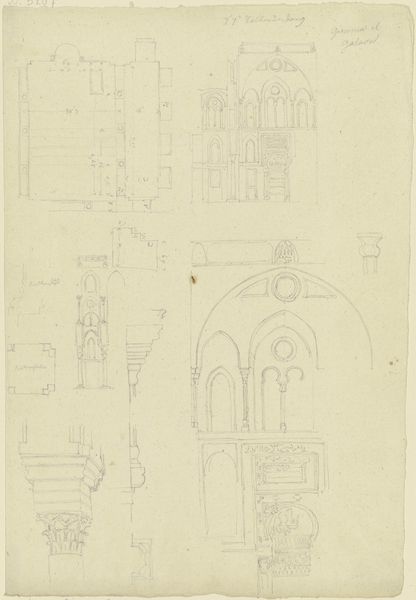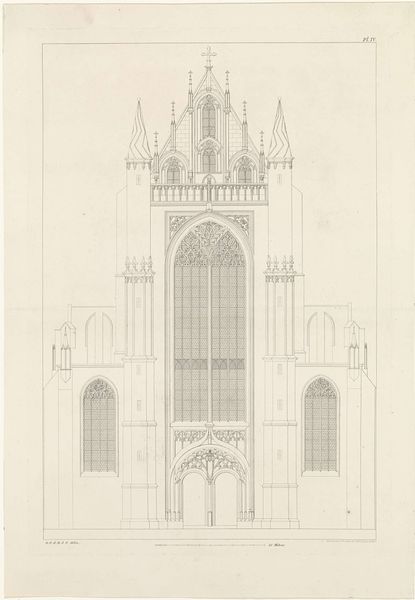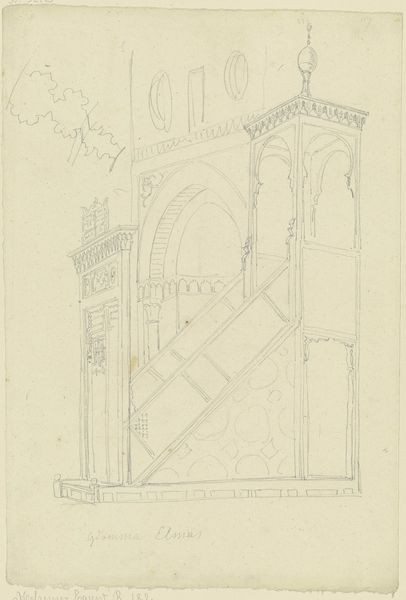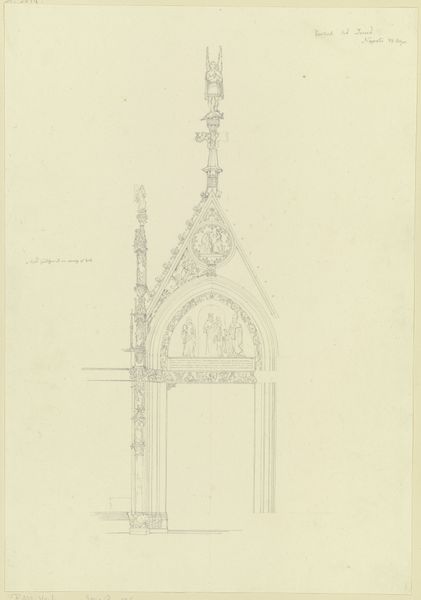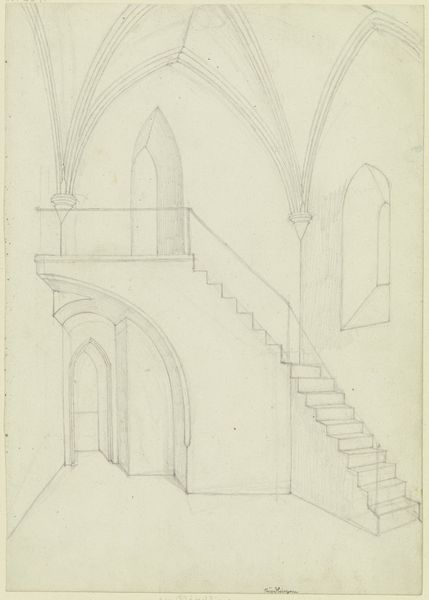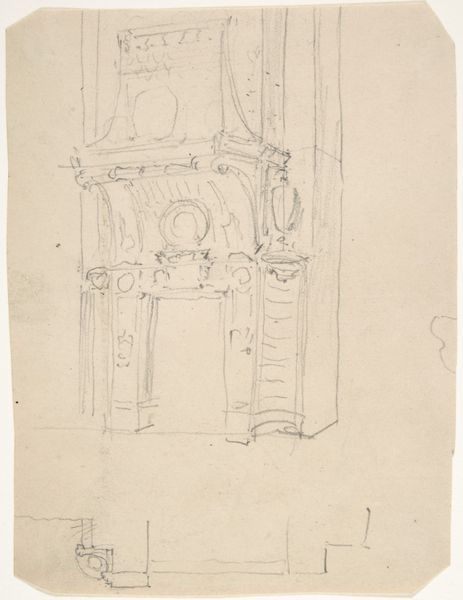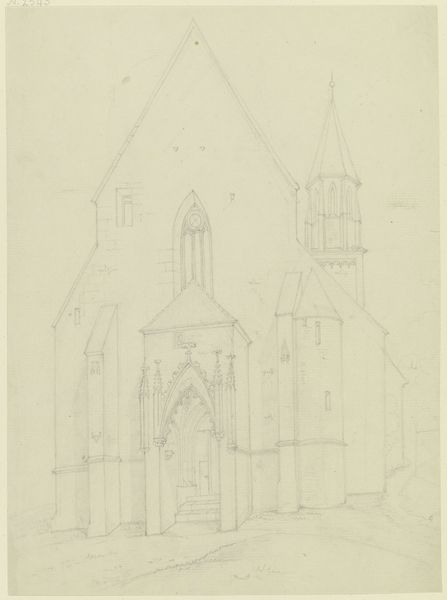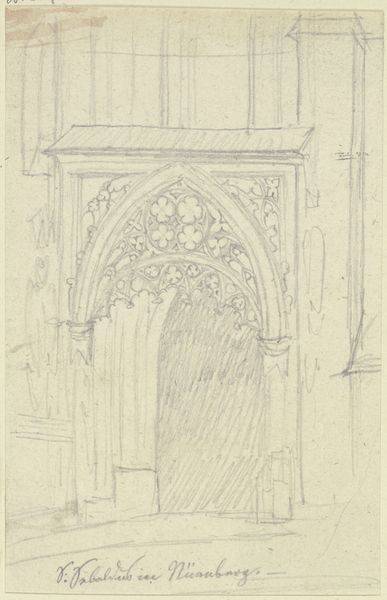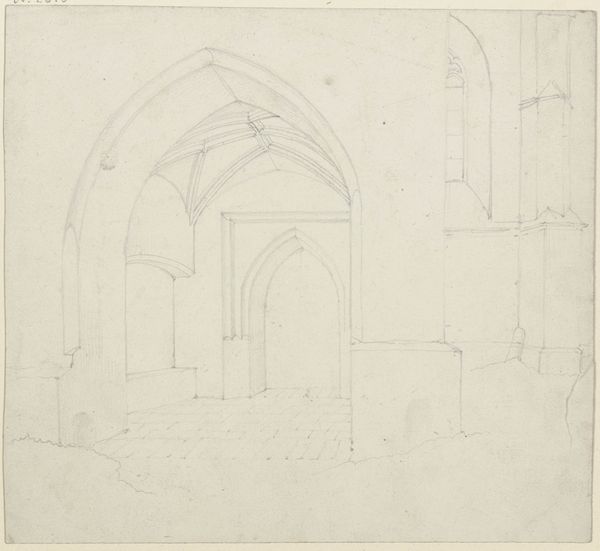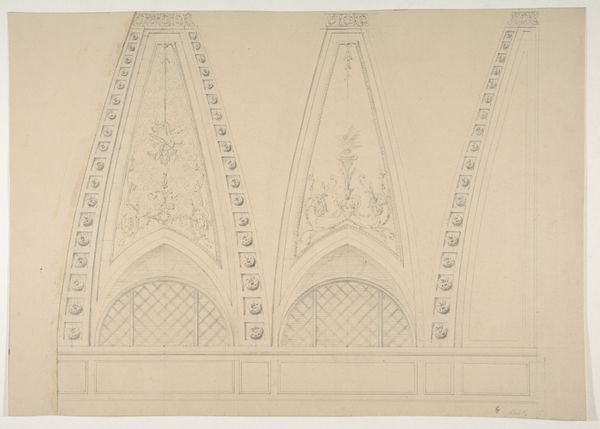
drawing, ink, pencil, architecture
#
drawing
#
medieval
#
form
#
ink
#
geometric
#
pencil
#
line
#
architecture
Copyright: Public Domain
Editor: This is Karl Ballenberger's "Studienblatt_Maßwerkfenster in Frankfurt am Main," a drawing in pencil and ink. It looks like a study of gothic window designs. I’m struck by the precision and the almost obsessive detail of the tracery. What do you see in this piece? Curator: Beyond the obvious technical skill, I see a yearning for order and a fascination with structure typical of its time. Think about the socio-political context – the rise of industrialization, shifts in religious authority. How might these delicate, geometric forms offer a sense of stability or perhaps even resistance against that backdrop? Editor: So, you are saying that the drawing of the window provides some resistance? Curator: Precisely. These windows, initially designed to let light into sacred spaces, often represented wealth, power, and divine connection. Ballenberger, by meticulously studying and documenting them, may be participating in a larger discourse about who controls knowledge, beauty, and ultimately, spiritual experience. Editor: That's an interesting interpretation! I was focusing on just the shapes, the lines, and not the intention or cultural setting that influenced Ballenberger. Does his rendering style suggest anything about his perspective? Curator: The emphasis on line suggests an interest in capturing the *essence* of these windows. The tracery patterns weren't simply decorative; they held symbolic meaning related to religious beliefs and philosophical principles. This isn’t just an architectural study, it's a study of power encoded in form. Think about it: Who has access to these spaces? Whose stories are told through these designs? Editor: That makes me think about the legacy of cathedrals, both then and now. Thank you. Curator: Absolutely! I'm glad to have perhaps helped you examine architecture as a language—encoding social and cultural narratives beyond their visual qualities.
Comments
No comments
Be the first to comment and join the conversation on the ultimate creative platform.

